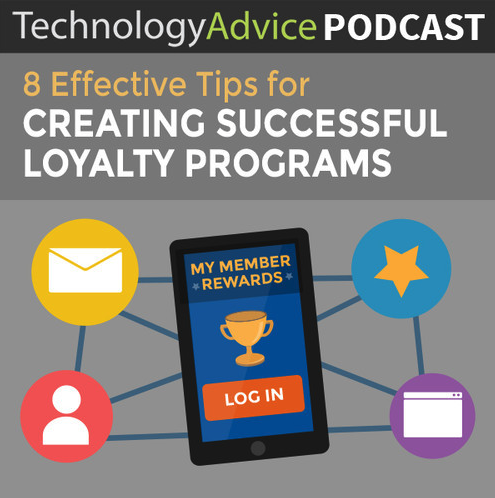Ashley Tate of BigDoor and Barry Kirk of Maritz Motivation have a deep understanding of customer loyalty rewards programs. As the Director of Marketing for BigDoor, a company dedicated to helping brands and consumers engage online, Tate has seen first-hand what works in the loyalty marketing space. Similarly, as the VP of Loyalty Strategy for Maritz Motivation Solutions, a 100-year old loyalty marketing company, Kirk offers insight into rewards programs from his years of experience.
In the following interview, they share their best recommendations for seeking and maintaining growth within a loyalty rewards program.
Offer the Right Kinds of Awards
Tate and Kirk both encouraged companies and brands to be intentional and deliberate about their choice of rewards. In the past, “free stuff” was used as an incentive, and companies often didn’t care whether or not the award aligned with their goals as a business or was what a consumer actually desired.
To make a mark on a consumer so as to gain their trust and loyalty, Tate suggests seeking out unique rewards to offer consumers. She’s seen a current trend in such rewards as experiences (trips), digital content, and sweepstakes offerings.
Kirk added that brands shouldn’t just give out rewards for the sake of rewarding their customers, but that such rewards should have intrinsic value to the consumer. In other words, companies should place themselves in the shoes of their consumers and consider what type of reward such a consumer would actually desire to receive from their company.
Kirk also suggested that companies should offer cash or gift cards as loyalty rewards as it’s what people often desire, and also helps curb shipping and warehousing costs.
Consider the Cost for Both the Company and the Consumer
On the other hand, Tate encouraged companies to move away from dollar-backed rewards because of the one-to-one cost of such a loyalty rewards program. While it may be what the consumer wants, offering dollar-backed rewards becomes a more challenging task as the rewards program grows.
To fill that gap and still offer a reward that consumers want, Tate has seen an expansion in non-dollar-backed reward offerings, like original content online. Again, offering online content or other non-dollar backed rewards cuts costs on warehousing and shipping. Additionally, such rewards can often be given instantaneously to a consumer.
In consideration of the consumer’s cost, Kirk mentioned “reciprocal loyalty,” or thanking a consumer before they’ve made a purchase. With such a strategy in place, a consumer’s cost to enter a loyalty program is zero, and it likely makes the consumer feel good about interacting with the company if that company is thanking them for visiting their website or sharing a deal on social media.
Integrate Social Media into Your Loyalty Rewards Program
Among other benefits, social media drives loyalty rewards program growth by:
-
Offering consumers a way to digitally shout their loyalty
-
Giving a voice to the customer
-
Building cult loyalty
Kirk encourages companies and brands to ensure that social media is intimately tied to their loyalty programs so that consumers can easily share the benefits of the program. In other words, apps and websites need to seamlessly integrate social media to make it as easy as possible for consumers to share a company’s deals and rewards.
Tate reminds brands that the customer should always have a voice, and establishing customer support social media channels is an effective way to hear directly from consumers. When consumers begin to see how well a company responds to praise or complaints, their loyalty will increase.
Lastly, Kirk recommends that brands pursue “cult loyalty” over “legacy loyalty.” Cult loyalty occurs when a consumer identifies some part of himself or herself with a brand, e.g. Apple fanatics. Legacy loyalty occurs when a consumer purchases a particular brand because that’s what they’re most familiar with or that’s what their parents used. Kirk sees millennials often pursuing cult loyalty brands, and an established social media presence offering unique rewards to a specific group of people can help engender that inclusive feeling.
To learn what drives customers to take part in loyalty programs, read TechnologyAdvice’s 3,000-loyalty-program-member survey, Why Customers Participate in Loyalty Programs.
For more on BigDoor, visit www.bigdoor.com, or connect with @AshTate on Twitter. For more on Maritz Motivation Solutions, visit www.maritzmotivation.com, to connect with Barry Kirk at @barrykirk.
***
This interview was provided by Gsummit media partner TechnologyAdvice, an Inc. 5000 company that is dedicated to educating, advising, and connecting the buyers and sellers of business technology. Interview conducted by Clark Buckner.








